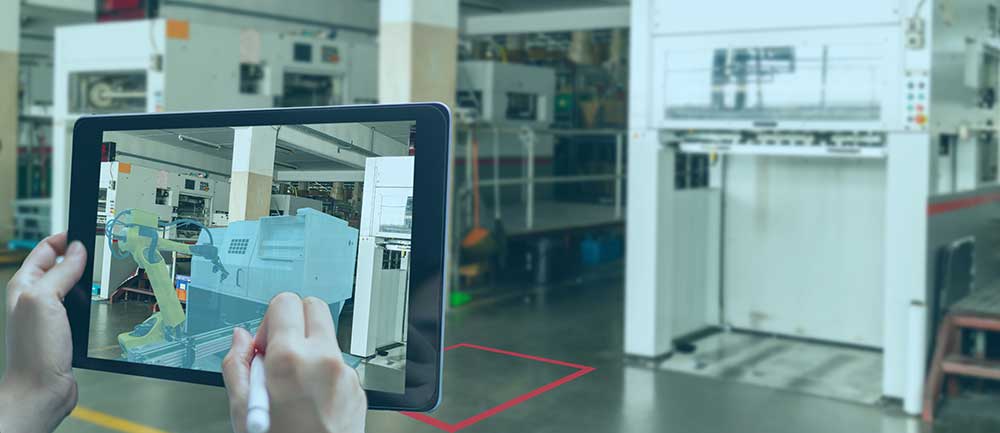
Predictive Maintenance: A Comprehensive Guide
Every business, whether an automotive production house or a manufacturing hub, relies on some equipment for daily operations. This equipment needs regular maintenance in order to function efficiently. According to a Statista study, around 40% of US companies spend anywhere between 21- 40% of the total operating budget on maintenance alone. While the study included only the USA companies, the story is for all companies worldwide.
Table of Contents
The challenge, however, arises in maintaining this equipment. Maintaining the equipment based on guesswork or scheduled repairs based on experience may sometimes disrupt the manufacturing process significantly.
Predictive maintenance can be the solution to overcome challenges like unplanned maintenance and downtime, budget concerns and poor-quality production. It can help to reduce maintenance costs and offer additional benefits like increased productivity and reduced downtime.
What Is Predictive Maintenance?
 Predictive maintenance is a proactive approach towards equipment maintenance. It leverages data analytics to monitor and detect anomalies in data recorded from the equipment at regular intervals. The insights generated from the analysis of this data enable managers to determine the possibilities of a breakdown, allowing them to initiate measures before the point of failure.
Predictive maintenance is a proactive approach towards equipment maintenance. It leverages data analytics to monitor and detect anomalies in data recorded from the equipment at regular intervals. The insights generated from the analysis of this data enable managers to determine the possibilities of a breakdown, allowing them to initiate measures before the point of failure.
For example, predictive analytics platforms are used to monitor equipment used in trains. A train is built using multiple equipment, and failure of a single piece can lead to a complete shutdown. Monitoring equipment data and identifying patterns to learn the health of the components over time help in proactively reducing risks and in improving efficiency.
Predictive maintenance is also used to identify trends. For instance, it can determine when a component will likely fail based on its past behavior. This allows managers to plan a backup or an alternative solution, which helps them take timely measures before any such failure occurs.
Due to these benefits, managers across businesses and industries rely on predictive maintenance. According to a market study by MarketsandMarkets, the global predictive maintenance market is expected to rise from $4.2 billion in 2021 to $15.9 billion by 2026, at a CAGR of 30.6%.
How Does Predictive Maintenance Work
Predictive maintenance works by gathering real-time data, studying past data and analyzing the two to make predictions. Many technologies including sensors, predictive algorithms, business intelligence and big data analytics help with predictive maintenance. It all comes down to two broad classifications: IoT and AI.
The Role of IoT in Predictive Maintenance
IoT enables devices to collect and share data over the internet in real-time. When attached to equipment, IoT sensors gather and store the data generated by them. An AI-based predictive algorithm then uses real-time and historical data to identify trends, bring out information that helps optimize maintenance and predict failure while maximizing efficiencies and potential.

There are many ways that IoT can be used for predictive maintenance. It can be used to monitor the temperature of machines or their movement patterns. If a machine’s temperature is too high or too low for an extended period, it may indicate something is wrong with its cooling system or other parts of its operation. If a machine’s motion patterns change from standard patterns over time, then this could indicate that parts may need repair or replacement. The data gathered by monitoring devices can also help predict when parts need replacing before they fail.
How AI Is Acing Predictive Maintenance
IoT gathers raw data directly from the source–the equipment. Different types of AI mechanisms, such as supervised learning, deep learning and machine learning can deep-dive into this raw data and help make sense of it. These technologies generate insights based on the data feed, which managers can then use for actionable insights to prevent equipment breakdowns.
Difference Between Predictive and Preventive Maintenance
Both predictive and preventive maintenance aim to protect the equipment. However, the difference lies in their approach to achieving that goal. Here are some critical differences between preventive and predictive maintenance:
| Predictive Maintenance | Preventive Maintenance |
|---|---|
| Takes a proactive approach | Follows a scheduled approach |
| Leverages predictive technology to predict and prevent failure, thus reducing costs | Leverages notifying software to notify caretakers about upcoming maintenance |
| Does not require extended downtime as maintenance is done proactively | Requires downtime for maintenance |
Types of Predictive Maintenance Techniques
Predictive maintenance is done with the help of several techniques. Each of these techniques helps detect some key indicators of the machine that helps with maintenance. Here are the most used predictive maintenance techniques:
Infrared Imagery
Infrared imagery, also known as infrared thermography, refers to monitoring heat signatures of components with the help of infrared cameras. Whether due to faulty components or overload, incorrect temperature can cause equipment failure. For example, a heater that is not producing enough heat or a compressor that is leaking refrigerant can cause equipment to malfunction. Access to this information can help managers to repair or replace components to avoid failure.
Acoustic Analysis
In terms of predictive maintenance, acoustic analysis means monitoring the sound of equipment when it is operating. With acoustic analysis, managers can monitor sound frequencies and detect abnormalities, indicating problems in the equipment. Maintenance teams can also use it to identify leakages, friction and stress in machinery.
Vibration Analysis
This predictive maintenance technique is useful in detecting vibration patterns and is widely used with motors. When motors work, they generate vibrations that can be monitored with the help of sensors or even hand-held devices. When equipment parts like bearings and shafts start to deteriorate, the vibration patterns change. These changing patterns indicate a need for repair and maintenance.
Oil Analysis
Oil analysis uses oil samples to find out the wear and tear of an asset. In this technique, an oil sample is collected from the lubricant of the equipment. Tests are conducted on the oil samples to determine key indicators, such as viscosity, presence of water, acid and base number, byproducts of overheating, etc. Based on the test results, managers can schedule maintenance as a part of a predictive maintenance strategy.
Business Intelligence and Predictive Maintenance
The data collected with the help of these techniques and sensors like PLCs, SCADA systems is in raw format. This data needs to be cleansed, processed, and analyzed to bring out useful information. Business intelligence platforms like Intellicus help in collating data from multiple sources and help businesses make sense of such varied data with the help of their smart ETL processing. BI platform also offers built-in AI, machine learning capabilities to analyze historical trends in the machine data, identify patterns, and predict maintenance requirement. Next-gen visualizations in BI platform help in presenting this information to varied audience in the format most suited to them, thus invoking quick and smart decisioning. The overall process can be scheduled and automated that requires minimal human interventions and democratizes information to decision makers at the right time.
What Are the Advantages of Predictive Maintenance

Reduced Maintenance Cost and Downtime
When maintenance teams can detect potential failure beforehand, they can take necessary measures to prevent it, saving on maintenance costs. Additionally, predictive maintenance can help manage the labor required for maintenance and help in reducing the need for replacing failed asset parts.
According to a study conducted by PwC, predictive maintenance can reduce maintenance costs by as much as 11% resulting in savings of thousands of dollars considering the high maintenance budgets of enterprises. A separate study by McKinsey concludes that the reduction in cost maintenance can go as high as 18% to 25% with the use of predictive maintenance.
Unplanned downtime can cost an average of $22,000 a minute to an automotive manufacturer, according to Forbes. Predictive maintenance can help avoid equipment failure and thus prevent any unplanned downtime, thereby improving asset uptime by as much as 51%.
Increased Machinery Lifespan
There are many ways in which predictive maintenance helps increase machine lifespan, such as:
Increased Productivity
Predictive maintenance has been proven to increase productivity in manufacturing facilities. A McKinsey report states that predictive maintenance can increase asset availability by 5% to 15%, through proactive and precautionary interventions. Moreover, with reduced downtime, engineers and machinists can focus on other strategic and operational aspects.
Reduced Stocking of Machine Equipment
Machine equipment stocking is vital as downtime costs can be prohibitive. Last minute sourcing of parts increases the downtime. Hence, most businesses stock these parts which can be capital intensive. Predictive maintenance can predict these failures, allowing maintenance teams to source the part just-in-time when the predictive maintenance platform warns of possible failure.
Improved Operator Safety
Machine breakdowns, that too unannounced, can not only be costly or time-consuming, but they can also be hazardous. For example, a power failure can lead to industrial accidents or cause fires. Predictive maintenance helps improve operator safety in a variety of ways:
How to Implement a Predictive Maintenance Program
 Here are the basic steps to help start the predictive maintenance program on the right path:
Here are the basic steps to help start the predictive maintenance program on the right path:
Identify Critical Assets
The first primary task is to identify critical assets. Looking at the benefits, it can be easy to think of monitoring everything through predictive maintenance. However, this can lead to an abundance of inappropriate data and added costs, leading to failure.
Assets with high maintenance costs and frequent failures are the best candidates to become a part of the predictive maintenance program. Also, organizations must identify equipment with the most value for the business, focusing on the ones that can lead to substantial productive disruption upon failure.
Running a Reliability Centered Maintenance (RCM) analysis can also be beneficial in identifying critical assets. RCM analysis is like a decision tree that considers historical data, functionality, reliability, design limitations, etc.
Establish a Database
Insufficient, incorrect and poor-quality data is another significant problem in predictive maintenance. Since predictions are based on historical and real-time data, the data plays the most vital role in ensuring success.
Creating a data continuum is necessary by constantly gathering relevant data through sources. This can ensure that there is no leakage and that all the data is gathered and stored efficiently.
Leverage IoT Devices and Sensors
While establishing a database, the data engineers and maintenance teams can determine which data is missing and may recommend installing IoT sensors on relevant machine parts to gather the required data. For example, if a company is manufacturing cars and has data about engine temperature and oil analysis. However, if the data on gear and vibrations are missing, maintenance teams can install sensors to fetch that data in real-time.
Implement Predictive Analytics Platform
A predictive analytics platform helps in leveraging algorithms to analyze the data. This is done after identifying the failure alerts required by the maintenance teams. For instance, if the team wants an alert for inappropriate vibrations, the platform developers will deploy an algorithm that analyzes data and predicts when the vibration will reach a threshold that requires maintenance. The predictive maintenance platform deployment cycle consists of 5 phases:
Adopting Predictive Maintenance Across the Organization
The last step is to deploy the pilot program at full scale and work on it for continuous improvement. Democratization of the analytical information is vital for promoting quick adoption and achieving desired outcomes. Managers, ground staff, line operators etc. must receive adequate information on their relevant processes to effectively use the information and reap predictive maintenance benefits. Once the pilot program is deployed successfully, executives can decide on how to scale it to other critical assets over time.
Applications of Predictive Maintenance Across Industries
Predictive maintenance has seen significant widespread adoption in various industries, including oil and gas, aviation/aerospace and manufacturing.
The Aviation Industry
The aviation industry is the most demanding regarding maintenance and predictive maintenance. With hundreds of parts, each with its unique characteristics, there is a lot of potential for failure. Aviation industry equipment and infrastructure also faces other challenges, such as weather, which can cause significant damage. Therefore, aviation companies spend significantly on maintenance, thereby increasing the market share of aviation maintenance, repair and overhaul (MRO). Poised at around $68.5 billion in 2021, the aircraft MRO market is expected to reach a whopping $117.6 by 2031.
The cost of downtime for an airline can result in millions of dollars lost by airlines. To make matters worse, these outages often result in additional expenses due to overtime pay or other measures taken to make up for the lost time.
Predictive maintenance allows companies like airlines to manage their resources better and reduce costs by avoiding unnecessary downtime and repairs. An organization can predict when certain parts will fail based on data collected from similar events using predictive analytics tools. For instance, if an airline can predict the breakdown of a certain part, cost saving strategies like procuring replacements ahead of time can be deployed.
The Manufacturing Industry
Predictive maintenance has proven particularly useful in manufacturing companies. For example, if a company has a machine used for cutting steel displays an unusual acoustic profile, it could be a sign of an impending breakdown.
With predictive maintenance, the maintenance teams can set up automated systems that always monitor the status of the machines and determine whether there’s anything wrong with them before they break down completely. If an issue is detected early enough, the engineers or technicians can fix the problem immediately and keep production going as normal. By preventing failure and ensuring regular maintenance, predictive maintenance can also extend the life of aging assets and maintain a machine’s value.
The Automotive Industry
In the automotive industry, predictive maintenance can be applied to several processes. The first application is in tracking tires. By monitoring the tread depth, tire pressure and temperature of all tires in a fleet, predictive maintenance software can identify vehicles that are due for a replacement or repair before they fail. This reduces the risk of accidents caused by old tires and helps companies reduce costs by avoiding unnecessary repairs.
Another application of predictive maintenance in the automotive industry is oil analysis. By monitoring the amount of oil in each vehicle’s engine, predictive maintenance software can identify when an oil change is necessary before there’s any damage done to the engine itself.
A simple example can be that of the BMW Group which uses predictive maintenance in a diverse range of applications. For one, it monitors welding guns’ performance with predictive maintenance. Data from welding guns from all the BMW branches worldwide is collected and sent to the cloud, where it is analyzed. The BMW Group also uses predictive maintenance to prevent conveyor downtimes. The company’s control units of conveyor systems constantly send key data, such as electrical currents and temperature, to its cloud-based software. The data is then shown on a single dashboard to help get a holistic view of complete data which can generate insights quickly to schedule maintenance in advance.
The Oil and Gas Industry
The oil and gas industry has many moving parts, including pipelines, wells and pumps. These parts are all made up of mechanical components that need routine maintenance, usually through inspections or advanced techniques such as vibration analysis or ultrasonic testing. When predictive maintenance is integrated into these process, they can help identify the sources of potential problems. Maintenance teams of an oil and gas company can use it for oil and gas pump condition monitoring, identifying when a pump is going to fail, or for pipeline inspection, which helps them detect corrosion and other damage that could lead to leaks or ruptures.
Similarly, predictive maintenance can also be used for tank pressure monitoring, virtual rig monitoring, drill corrosion detection, and more. Applying predictive maintenance across these applications is vital to save billions of dollars annually. A McKinsey report states that most oil and gas offshore platforms run at only 77% of their total capacity. Applying predictive analytics can help improve the numbers.
The Healthcare Industry
Predictive maintenance is still relatively new in the healthcare industry as the need to ensure security to prevent leakage of patient data can be a crucial challenge hindering the adoption. However, predictive maintenance can yield significant efficiencies in the maintenance of key equipment.
Healthcare institutions and the equipment used for patient care work optimally in a certain temperature range. A predictive maintenance program can help avert the failure of the HVAC systems that ensure a stable temperature and prevent it. Moreover, predictive maintenance can also predict the failure of machines, such as the vital signs monitor. Failure of such machines can significantly impact patient care as doctors prescribe medication and care procedures usually based on the vitals. Hence, using predictive maintenance to avoid the failure of these machines can help streamline patient care.
Challenges in Implementing a Predictive Maintenance Program
For around two decades, companies have seen predictive maintenance as a boon to predict and prevent failure, with many having started implementing it. However, only a few have successfully implemented predictive maintenance at scale.
 Implementing a predictive maintenance program can be challenging, especially if the organization doesn’t have the right expertise. Common mistakes include making every asset a part of predictive maintenance or fails in drawing insights from data. Let’s take an in-depth look at the challenges faced while implementing it:
Implementing a predictive maintenance program can be challenging, especially if the organization doesn’t have the right expertise. Common mistakes include making every asset a part of predictive maintenance or fails in drawing insights from data. Let’s take an in-depth look at the challenges faced while implementing it:
Lack of a Skilled Team
When an organization implements predictive maintenance, it raises the need for the maintenance team to have at least a basic understanding of digital technologies. Although a challenge, companies can tackle the challenge of the need for a skilled team with training and development. The engineering and maintenance teams not only need to learn how to ensure that the sensors are doing their job of gathering data, they also need to learn how to use the analytics tool to generate insights. Hence, selecting a predictive maintenance tool with a simple interface and clear dashboard is vital.
Security
Implementing predictive maintenance means an ongoing process of collecting and storing data, which quickly becomes vital for running business operations efficiently. Losing this data can lead to downtime, which creates a security vulnerability. While large enterprises can afford to spend significantly on security, that might not be the case with many small businesses, adding to the challenges faced in scaling predictive maintenance successfully. Many analytics providers recognize this challenge and offer robust security that enables even small and medium-sized businesses to leverage advanced cybersecurity technologies based on their requirements.
Current Assets Are Not Compatible with Sensors
Another challenge businesses face is machinery bought in an era when sensors were not ubiquitous. Hence, these assets are not compatible with all types of sensors that can provide different information required for predictive maintenance. Organizations need to invest in assets and make them compatible with sensors to successfully leverage the power of predictive maintenance.
High Initial Investment
The initial cost of the software and hardware required can make investment in predictive maintenance a daunting prospect. However, the successful implementation of predictive maintenance it can provide massive ROI in the long run. Studies show that returns on investment for predictive maintenance can be as much as 10 times.
Overcoming Challenges with Intellicus
Partnering with the right technology partner can prove to be the critical differentiator in the successful implementation of a predictive maintenance program. With over 17,000+ Enterprises, ISVs and SMEs partners, Intellicus brings all the expertise required for a successful implementation. Intellicus’ solution offers unified analytics, real-time production monitoring, predictive maintenance and demand forecasts. We help manufacturers analyze the historical performance of machines, co-relate with industry reference data and predict when any machine is likely to fail. Built and customized for business users, Intellicus offers a modern and convenient interface that ensures adoption of analytics throughout the organization.
Final Thoughts
Predictive maintenance is a revolutionary maintenance technique that can predict equipment downtimes, reduce maintenance costs and increase uptime. Organizations can start implementing predictive maintenance by selecting critical assets and installing sensors on them to gather real-time data. Adopting an analytics platform that supports predictive maintenance and encouraging organization-wide adoption are the next steps. Once done correctly, predictive maintenance can provide a wide range of benefits, including reduced downtime, maintenance costs and stocking of machine parts. It will also help increase productivity, machinery lifespan and operator safety.
Intellicus offers a BI & analytics platform with next-generation capabilities to leverage data and provide actionable insights. To know more about how Intellicus empowers manufacturers with predictive maintenance capabilities, connect at www.intellicus.com/contact-us.

